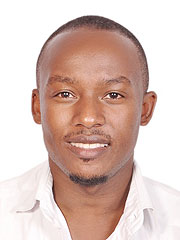THIS TIME of the year is a period for sombre reflection. That’s because the idea of genocide should trigger consideration about serious shortcomings of the human race. In Rwanda commemoration of the genocide against the Tutsi is always a reminder that the carnage took place right in our neighbourhoods.


THIS TIME of the year is a period for sombre reflection. That’s because the idea of genocide should trigger consideration about serious shortcomings of the human race. In Rwanda commemoration of the genocide against the Tutsi is always a reminder that the carnage took place right in our neighbourhoods. It brings the idea of genocide too close for comfort.
It was in the course of thinking about all this that I found myself thinking about the lives of those who somehow managed to survive this madness. How do they cope with life? What do the conditions in which they live mean to the rest of us?
All of us know a survivor. While some speak freely about their experiences during the dark period, others have decided to bottle up their pain. For me, as I suspect is the case for others, whenever I engage a survivor, thoughts linger about how his or her life was interrupted. The thoughts ultimately lead to something called reparations.
While the question of reparations stirs up intense debate in both academic and popular discourse as to what exactly it is about, there’s some consensus that it has something to do with making amends for a wrong that has been committed, restoring the victim to his or her ‘condition’ prior to suffering the injustice. In this sense, reparations seek to answer the question: What kind of life would the victim have lived had the wrongful act not taken place?
In turn, the response to that query ought to lead to the establishment of mechanisms to remove most, if not all, the consequences that have come upon the victim as a result of the wrongful act. In so doing, the kind of life that would have been possible for the victim in the absence of such a wrong is restored.
That is as clear as it gets. Things get much more complicated because some injuries result in death, making it impossible to restore the pre-injury status of a person who has been wronged. A strict application of the idea of reparations to such a scenario would only be possible through resurrection.
Similarly, the surviving kin would not have their lives fully restored because they have lost permanently a loved one, a situation that may be compounded if such a person was the backbone of the family, resulting in debilitating effects, such as poverty, humiliation, and indignity for the whole family.
The permanence of death, therefore, means that reparations can never fully restore the survivor’s life to its pre-existing condition. All is not lost, however. Reparations can be of two broad forms said to reach at least some abstract approximation of this condition. One form is material and targets compensation. The second is psychological and is intended to address the indignity that comes from victimisation: acknowledgement of guilt, apology, and construction of memorials for dignified burial of victims.
And so, the question before us: Have the survivors of the 1994 genocide against the Tutsi been restored to the conditions of life they would have lived in the absence of the injustice that was perpetrated against them?
As far as material compensation is concerned, survivors could file cases in formal courts against individual perpetrators and claim moral grief. That was possible between 1996 and 2000 prior to the establishment of the gacaca courts. Indeed, many received favourable verdicts that added up to tens of millions of dollars in compensation awards. Practical considerations, however, made enforcement of court awards impossible, as the majority of perpetrators did not have the means to pay. Moreover, with the advent of gacaca, this practice was discontinued because the gacaca jurisdiction did not have the power to award damages on the basis of moral grief.
In 2009, the government established the Fund for the Assistance of Genocide Survivors (FARG) where it allocates something close to 5 percent of the annual budget. Furthermore, the United Nations recognizes as reparations such government interventions as restoring citizenship rights of the victim group and their property as well as guarantees that the injustice will not recur through legal and institutional reforms in the place of those that occasioned the injury.
Clearly, the socioeconomic conditions in which we find ourselves have placed us in a straitjacket that limits our ability to restore genocide survivors somewhere close to their conditions prior to genocide. Collective ownership and responsibility over reparations would go a long way in this endeavor.
That’s why I’m convinced that something more than the compulsory contribution by taxpayers into FARG is needed. Indeed, the commemoration season always brings out private enterprises with donations for genocide survivors. This is commendable.
However, what’s required is more than charity. It’s a call for a systematic approach, akin to the agaciro fund, that mobilises Rwandans to take ownership and responsibility for helping our compatriots stand on their own feet again.


